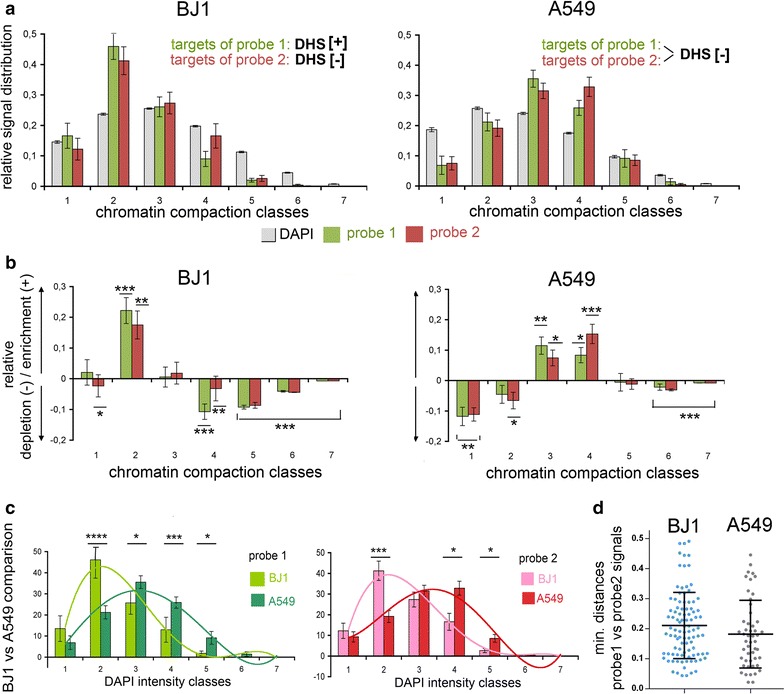Fig. 6.

Quantitative 3D mapping of two contiguous 6-kb DHS[+] and DHS[−] targets on DAPI intensity classes. a Relative signal distribution of probe 1 (green) and probe 2 (red) on respective DAPI intensity classes (all classes shown in gray) in BJ1 (left; N = 20) and A549 nuclei (right, N = 10). Note similar distribution patterns for both probes (n.s. at p < 0.5) within a cell type but distinct distribution between cell types. b Quantified levels of relative enrichment/overrepresentation (positive values) or depletion/underrepresentation (negative values) of probe signals relative to the classified DAPI signals show a highly significant overrepresentation in low-density class 2 and an underrepresentation in high-density classes 4–6. In A549 cells, both probes are significantly underrepresented in low-density classes 1 and 2 and overrepresented in classes 3–4. Error bars standard deviation of the mean. c Comparison between BJ1 (light green/light red) and A549 (dark green/dark red) confirms the distinct topography of both probes in distinct chromatin density compartments. Error bars standard deviation of the mean. d Minimal distances (nearest-neighbor analysis) between all differently labeled fluorescent signals for probe 1 and probe 2 in BJ1 and A549 cells, n.s. at p < 0.5 level. *p ≤ 0.05; **p ≤ 0.01; ***p ≤ 0.001
